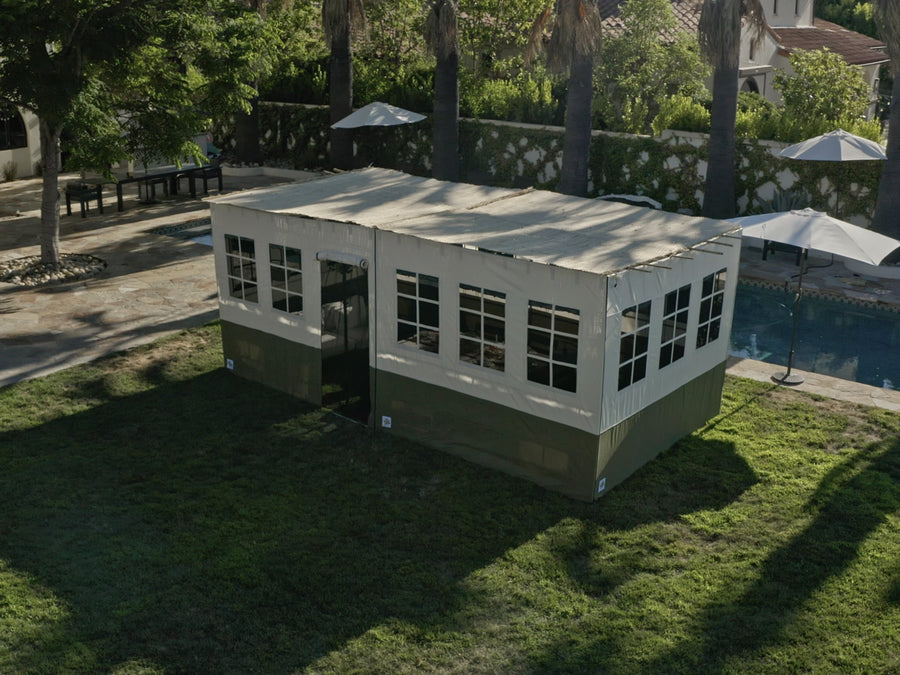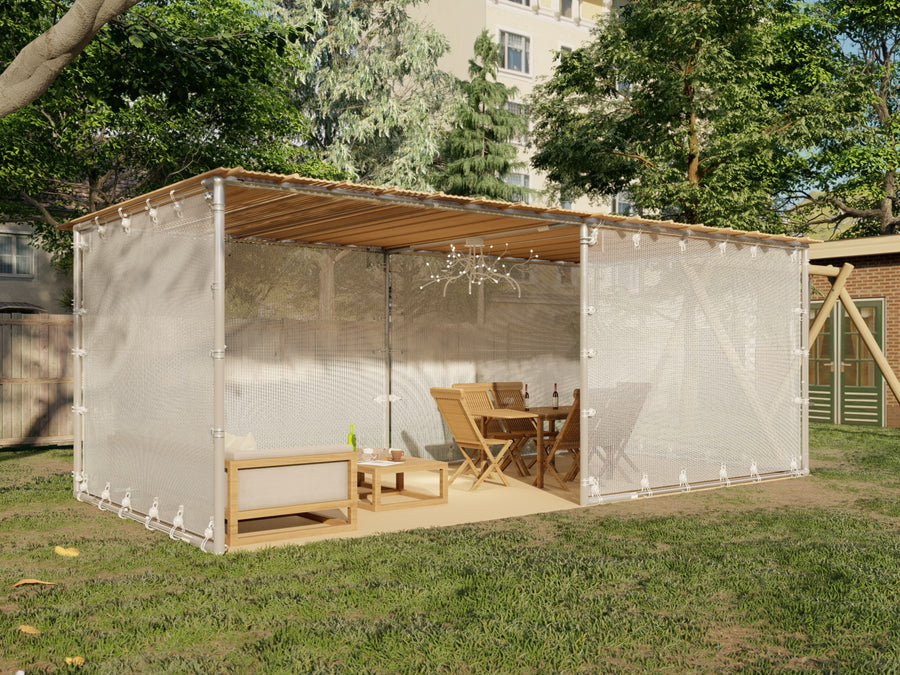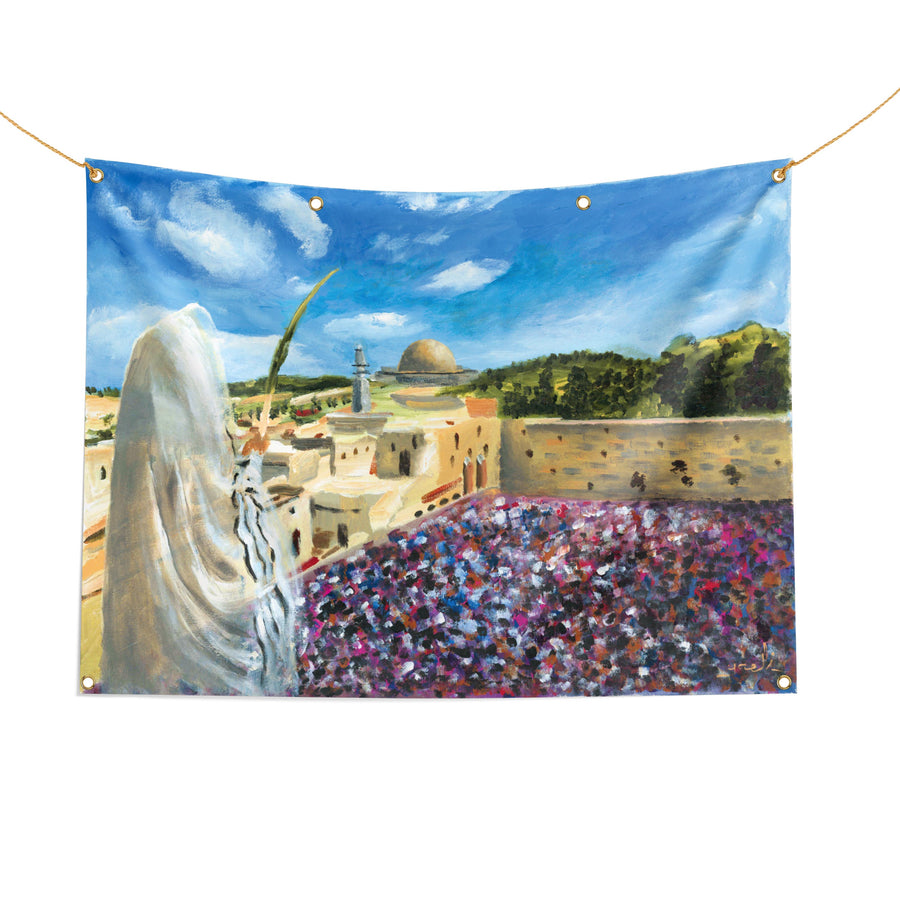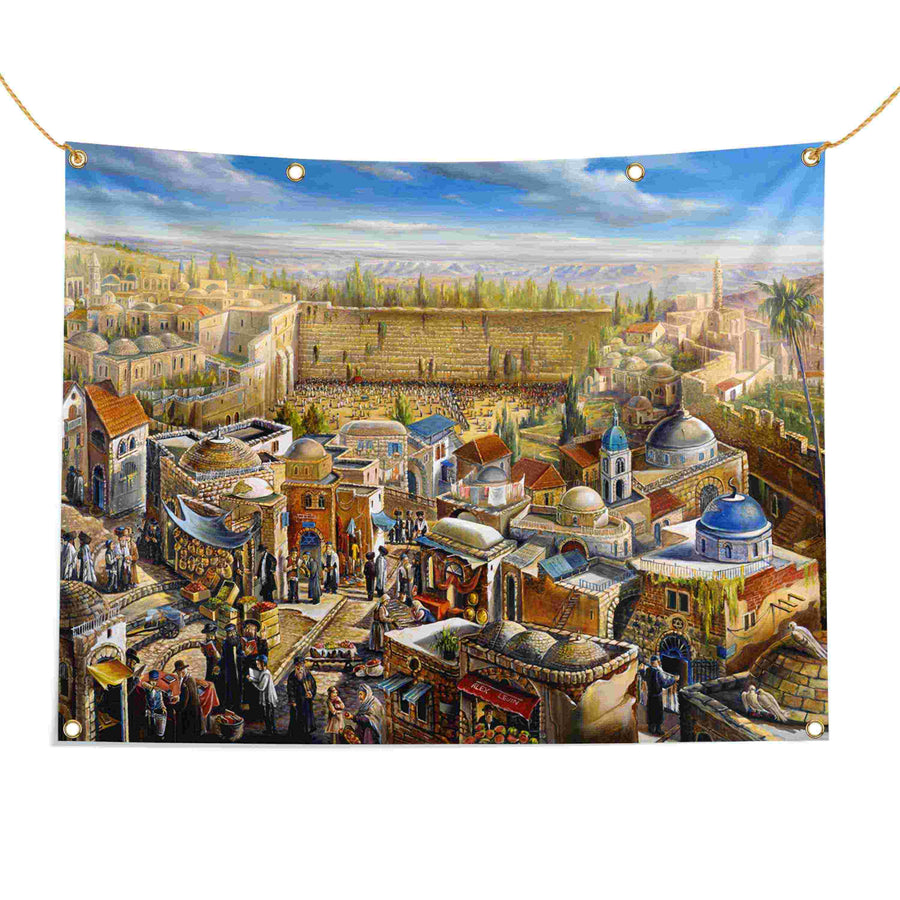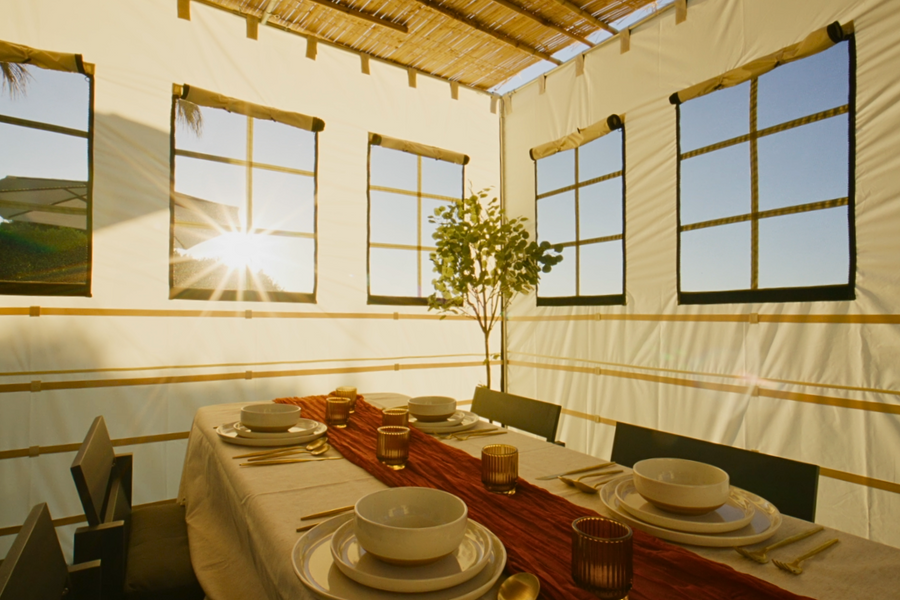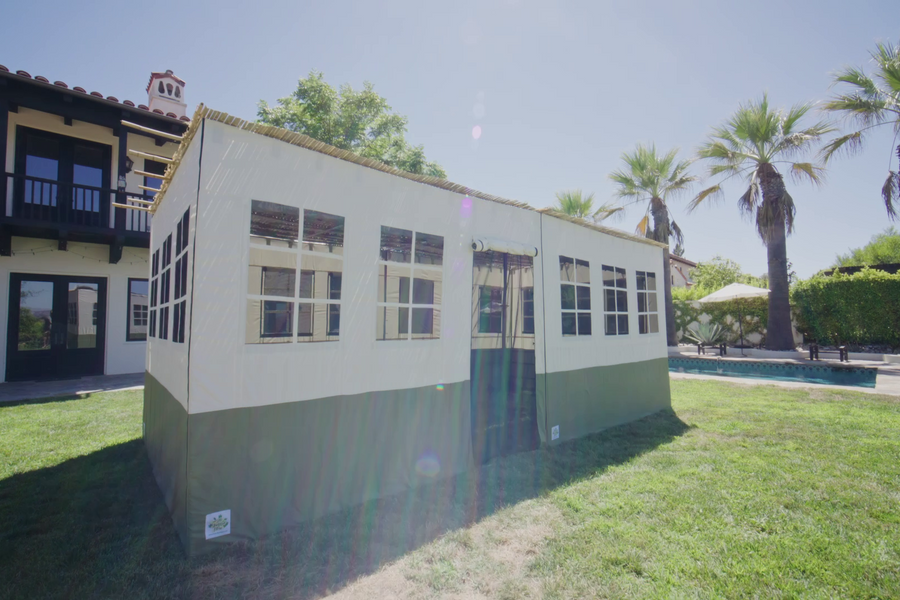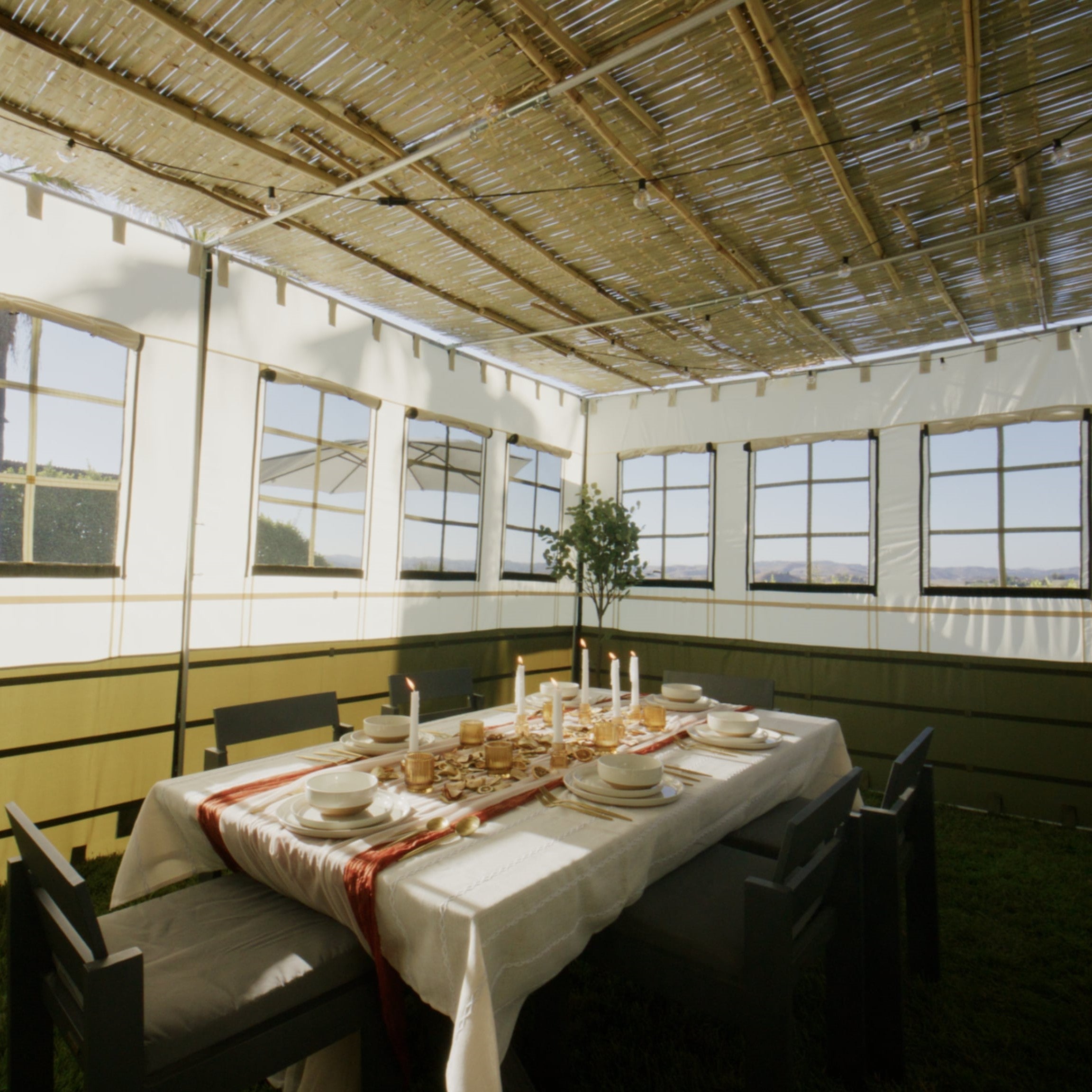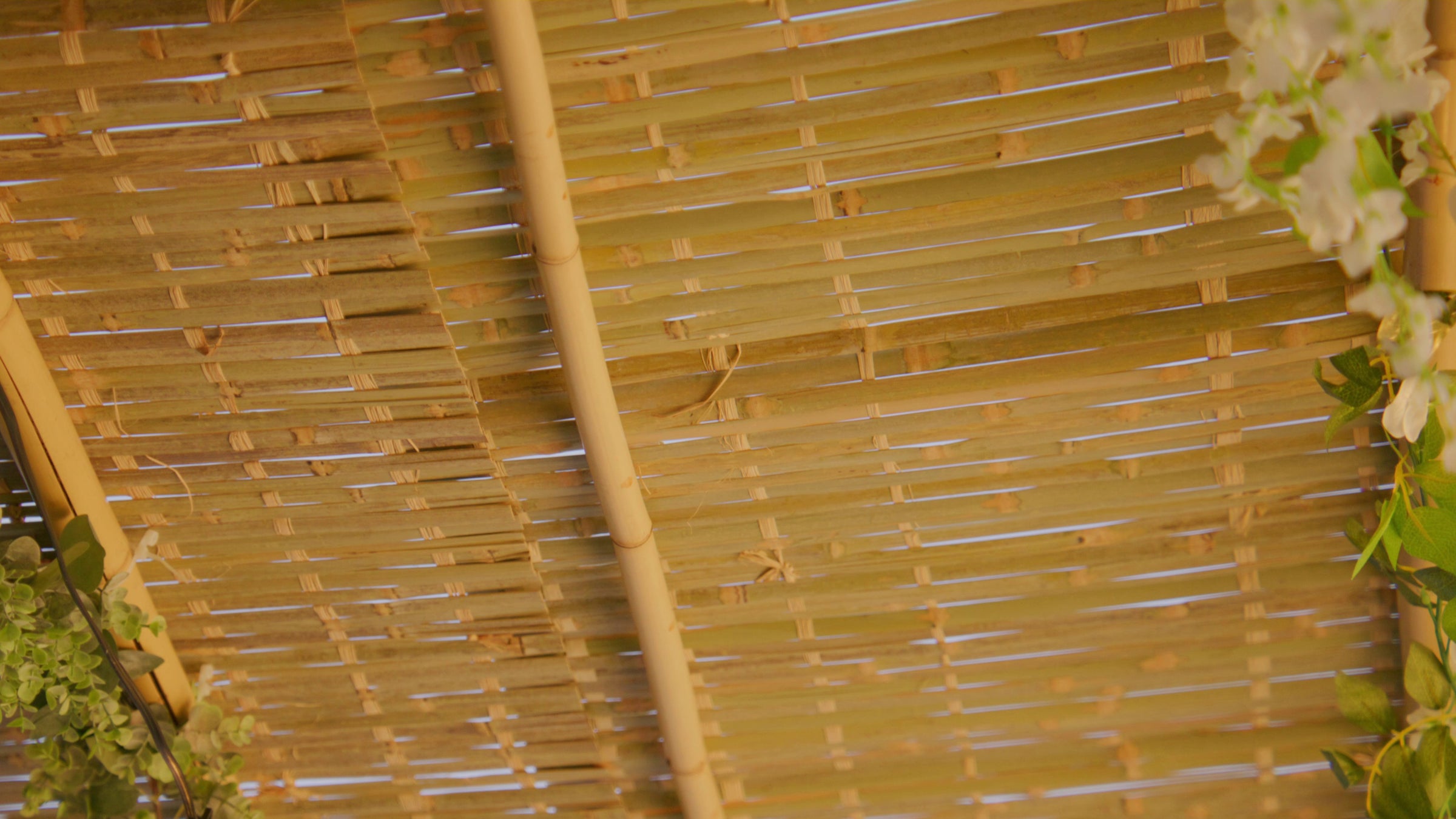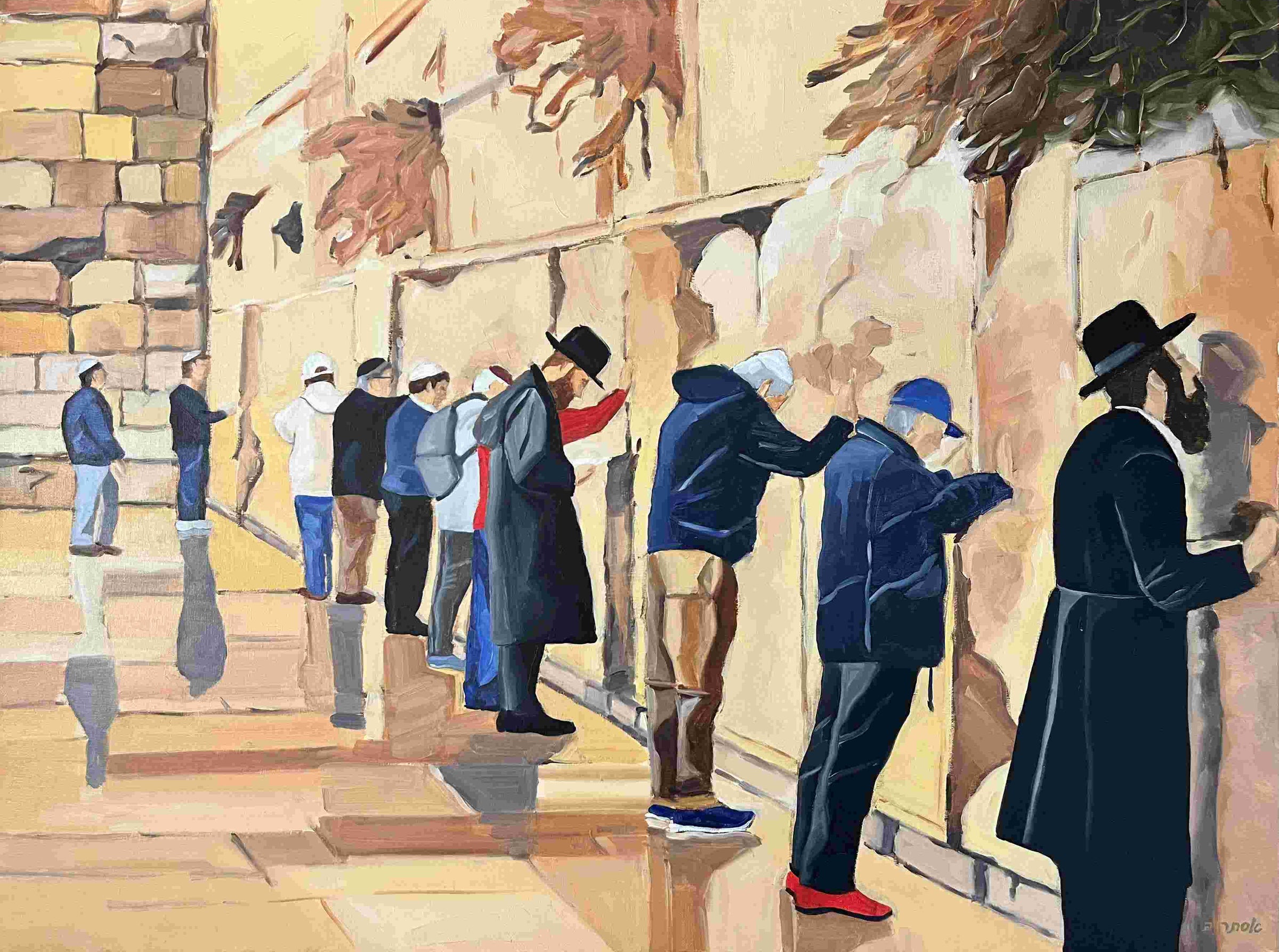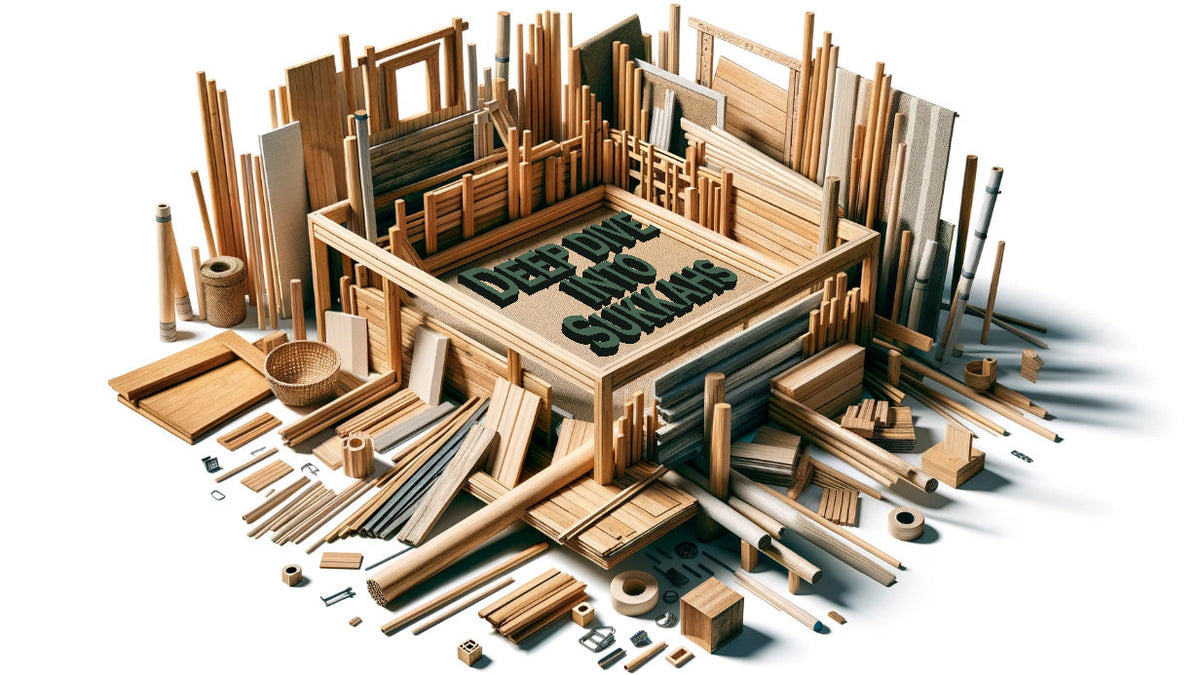

The Role of a Sukkah on Sukkot:
Sukkot, which falls on the calendar right after Yom Kippur, commemorates the Jewish people’s journey through the wilderness after their exodus from Egypt. At the same time, we also recognize the agricultural cycles in the Land of Israel, specifically the harvest.
Lasting for seven days, with an additional day celebrated outside of Israel, Sukkot involves building and living in temporary shelters known as sukkahs. The Sukkah symbolizes the divine protection that sustained the Jewish people during their journey in the desert. On Sukkot, we build and decorate sukkahs, enjoy festive meals with family and friends, add Hallel (praise to God) in our daily prayers and wave the Four Species (lulav, etrog, myrtle, and willow).
Right after Yom Kippur is when we begin to build a Sukkah. In this exploration of Sukkahs, we'll delve into more specifics about what a Sukkah is and the different types that are out there.
What is a Sukkah?
A Sukkah is is a temporary hut with a roof made of natural materials like branches or bamboo. More than just a physical structure, though, it represents faith, gratitude, and connection with God. By living in a Sukkah, we remind ourselves of our dependence on God and recognize the transience of life. That being said, we need an actual physical structure to fulfill the Torah obligations to build and live in it!
What are the basic Sukkah requirements?
While there can be some variation in their appearance, all Sukkahs share common features. Here are some key Sukkah rules:
- Minimum of 2 and a half walls (2 full walls and part of a third).
- Natural covering for a roof (Schach).
- The size must be large enough for at least 1 person to eat in it.
- It must be a temporary structure (specifically the Sukkah roof)
- It must be placed directly under the sky - without a tree or roof above it.
Even with these basic requirements, the possibilities are wide open for creativity in size, shape and decoration.
Different Types of Sukkahs:
Standard Sukkahs:
Most people build a standard Sukkah in their backyard or on a porch or deck. These are either DIY Sukkahs or a purchased Sukkah Kit. They don’t require a pre-existing frame or structure and don't need to be perched against your house. These Sukkahs are generally built specifically for Sukkot and then taken down when it’s over.
Pergola Sukkahs:
Some people either have an existing pergola attached to their house or as a separate structure in their yard or garden. These can usually be used to create a Sukkah by adding walls and Schach. The challenge with pergola Sukkahs is to find the right kind of walls to secure to the posts. The goal is to ensure that your Sukkah is kosher and that the pergola itself remains undamaged.
Ensuring that your pergola walls comply with Halacha (Jewish Law) can be difficult. You may end up with quite a Sukkah project, potentially having to build an extension or buy custom walls so that the Sukkah is done properly. We recommend consulting with your local Rabbi if you opt to go this route.
Portable or Pop-Up Sukkahs:
Some Sukkahs are designed to be portable allowing for travel or limited outdoor space. These come in various shapes and sizes. Their biggest advantage is that they can be set up quickly and transported easily to different locations.
Pop-up Sukkahs are even more lightweight and are made with fabric or canvas stretched over a flexible frame. Some pop-up sukkahs, like ours, weigh less than 10 lbs! You should look for one that includes the schach mat and carry bag for added convenience. With assembly and disassembly in a matter of seconds, day trips with your family are a breeze!
Building Sukkahs on a truck or boat:
Speaking of portable Sukkahs… have you ever seen a Sukkah on a truck or a boat? A mobile Sukkah is great for events or for a unique experience.
Have you ever seen the Sukkahs on Chabad trucks that you sometimes see traveling around the neighborhood? Well, they are perfectly kosher Sukkahs! If you are considering this, ensure that you consult with your Rabbi to make sure that you make it correctly!
What materials can I use for my Sukkah?
The Sukkah structure typically consists of a frame that is made from wood, metal, or plastic and needs to be secure enough to keep the walls in place. A strong Sukkah frame is crucial because it completely secures the overall structure. Your walls also provide shelter from the elements and some privacy for your family just like the walls of your home, especially if you are sleeping in it!
The Sukkah roof is made from natural materials like branches, leaves, bamboo, or woven mats. It lets in some sunlight during the day and gives a partial view of the stars at night. Whether you go with branches from your neighborhood or a purchased bamboo mat, make sure that it meets the criteria for kosher Schach.
What shapes can a Sukkah be?
A Sukkah, just like many things in life, can come in many shapes and sizes. As humans, we love variety and as a result, we've seen many different types of Sukkahs over the years. Sukkah designs vary based on personal choice and what's available in local markets, whether they are DIY or bought. While the specific details of Sukkah construction may vary, here are some of the possibilities:
Square or Rectangular:
Most Sukkahs are square or rectangular in shape. They are the most straightforward shape to build and the straight lines make it easy to put in tables and chairs (or even mattresses). They usually have 3-4 walls with one side left open or partially open for a door. You can also build these against your house wall which can be considered part of the Sukkah.
Circular:
Some people opt for the circular Sukkah for the ambiance and unique look. These may be more difficult to construct and may not utilize all the available space on your deck - but that's not the main reason you build one. They are a unique look and not something you see every day. You can also build a "round" Sukkah with 8 straight walls, creating an octagon shape that looks close to circular.
Triangular:
While this is anything but typical, it's not a problem to build a Sukkah like this. A triangle Sukkah is still considered Halachically acceptable. If you go this route, make sure to find a triangular table to fit inside!
Irregular or Custom Sukkahs:
There are many other acceptable shapes for your Sukkah. Some people opt build one to perfectly match their space. For example, if you have a patio or deck that has a narrow entry section and then a wider open area, you might build the Sukkah in two sections so that the entire space is part of your Sukkah.
For an easier time with a Custom Sukkah, we offer A-Z custom Sukkah kits - designed specifically for your space. Learn more about our Custom Sukkah Kits here.
What size should my Sukkah be?
Choose your size based on how many people you expect to host. One of our most commonly bought sizes is an 8x10 foot Sukkah.
There is no fixed size for a Sukkah, but by Jewish law, it needs to be large enough to accommodate one person to sit and eat. To be more comfortable, make space for furniture like tables, chairs, and maybe even a couch. Also, remember to leave some room for easy access. Look at our size chart to determine your ideal Sukkah size.
If you are building a Sukkah for a Synagogue or community center, then you'll need a much larger Sukkah. Unless you have a full time maintenance crew, a DIY Sukkah is a very difficult project. If you buy a Sukkah Kit, the building project can be transformed into a community event in which the main activity is building the Sukkah! Have music, food, and a lot of hands on deck to build and decorate your community Sukkah.
Sukkahs can come in a many shapes, sizes, and designs. No matter what type of Sukkah you create, the main thing is that it's filled with family and friends, delicious food, and joyous celebrations!
Chag Sameach!
